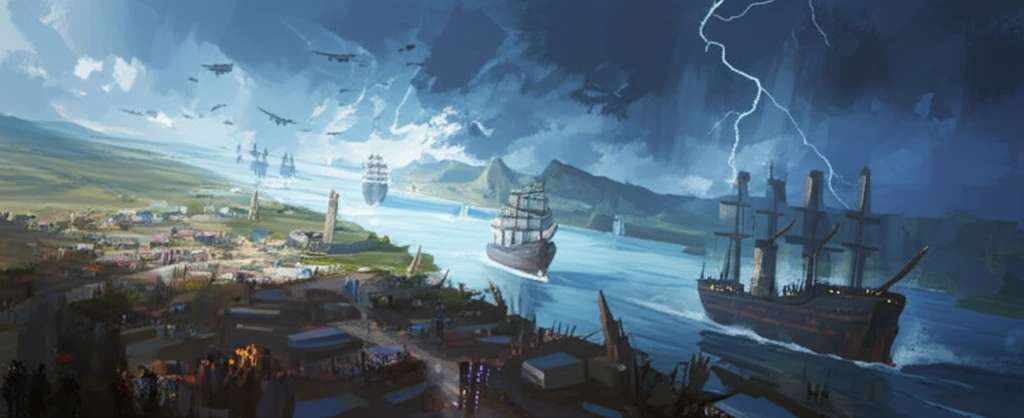
Is Geography Destiny? Unlocking the Secrets of Economic Prosperity
"How first-nature geography shapes economic development and why location matters more than you think."
Does where you live determine your economic fate? For centuries, economists have debated whether a region's geography—its rivers, mountains, and access to the sea—dictates its prosperity. While institutions and policies undoubtedly play a crucial role, a growing body of evidence suggests that "first-nature geography"—the natural landscape untouched by human hands—exerts a powerful influence on economic development.
A groundbreaking study dives into this question by examining two remarkable events in Danish history. In 1825, a violent storm carved a new navigable waterway in northwestern Denmark, effectively connecting a previously isolated region to global trade routes. Conversely, seven centuries earlier, a similar channel closed up between 1086 and 1208, severing access to the sea. By analyzing these natural experiments, researchers have uncovered compelling evidence of geography's lasting impact on economic fortunes.
This article delves into the findings, revealing how first-nature geography shapes trade, population growth, and the very location of prosperity. From the rise of manufacturing to the subtle shifts in fertility rates, we'll explore the mechanisms through which the landscape molds our economic destinies.
The Storm That Changed Everything: How a Waterway Transformed Northwestern Denmark

In the early 19th century, Northwestern Denmark was a relatively isolated region. The Agger Isthmus, a strip of land separating the Limfjord from the North Sea, acted as a barrier to trade. Market towns in the West Limfjord were small and struggled to access international markets. All this changed in 1825 when a storm breached the isthmus, initiating an erosion process that, by 1834, resulted in a navigable channel.
- Trade Boom: Ships began traversing the channel, connecting the West Limfjord to global trade networks. By 1855, nearly 2,000 ships used the Agger channel annually.
- Population Growth: The population of the West Limfjord region experienced a remarkable 26.7 percent increase within a generation of the event.
- Industrial Revolution: Manufacturing and fishing industries thrived as access to markets and resources improved.
- Institutional Adaptation: The government recognized the region's newfound importance, granting international trading rights to all Limfjord market towns.
Geography as Destiny?
This research underscores the enduring influence of first-nature geography on economic development. While institutions and policies matter, the natural landscape can shape a region's destiny by influencing trade, industry, and population distribution. Understanding these geographical fundamentals offers valuable insights into how we can foster prosperity in diverse environments, particularly as climate change reshapes the world around us.
